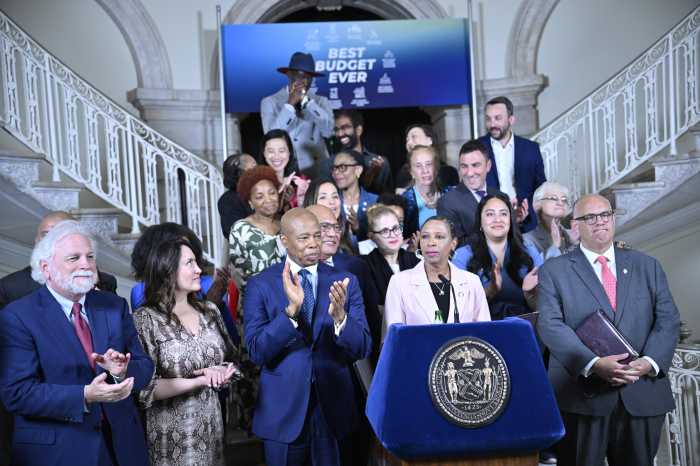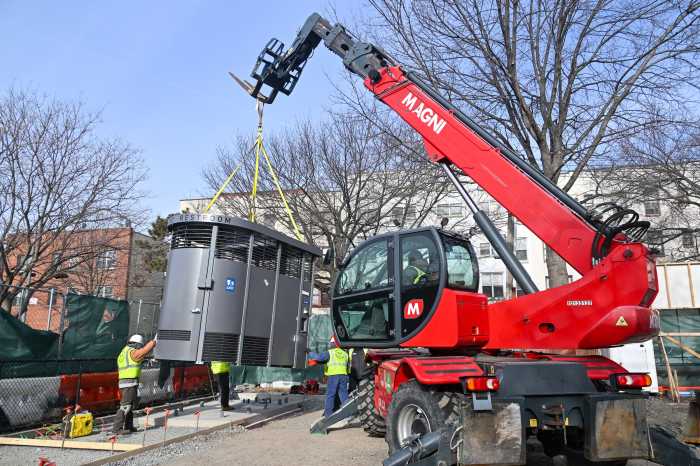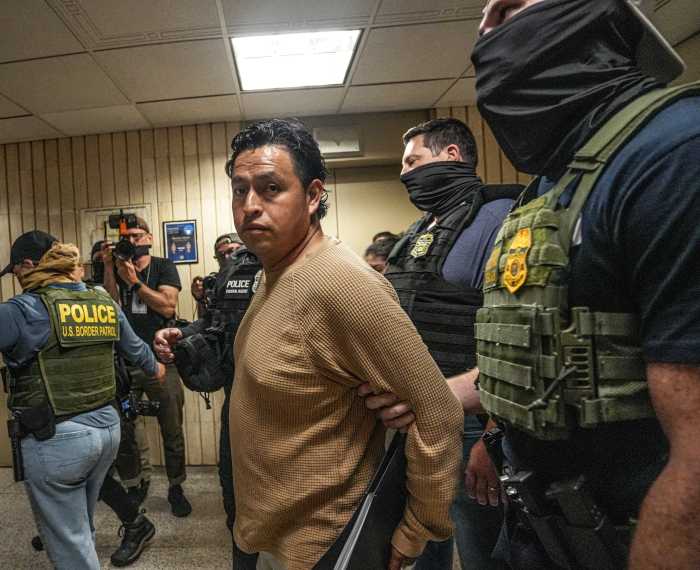
The city has failed to meet promises made as part of the approval of a tech training center in Union Square, a community group argued in a letter sent Monday to Mayor Bill de Blasio and Councilwoman Carlina Rivera.
During the approval process for the Union Square Tech Training Center, a 21-story building on East 14th Street, the group Village Preservation pushed for height restrictions for future developments, for fear the construction of the center would lead to more high-rise buildings in the neighborhood.
The tech hub, set to go up at the site of a now-shuttered P.C. Richard and Son between Third and Fourth avenues, is expected to create more than 600 jobs and house a digital skills training center for the community.
In approving the plans, the City Council did not agree to a height limit but committed to protecting historic buildings in the area, establishing a requirement for special permits for hotel development in the neighborhood and launching a “tenant-protection campaign” to help rent-stabilized tenants understand their rights.
Though the Landmarks’ Preservation Commission recently designated several buildings on Broadway, near Union Square, as landmarks, Village Preservation says the city has not yet carried out the “extremely modest” commitments for a special permit and tenant-protection campaign.
“As of this date, more than a year after the approval by the City Planning Commission, no steps whatsoever have been taken to implement either of these measures,” the letter says.
In response to the letter, a spokesman for Rivera, who represents the district where the center is being built, noted multiple measures that have been met and said a “Know Your Rights” campaign for tenants is expected to begin this month.
“A number of measures related to preservation and tenant protections have indeed proceeded in the surrounding neighborhood, including the Landmarks Preservation Commission’s hearing of seven historic buildings along the Broadway corridor, ‘Know Your Rights’ Tenant Resource Fairs with HPD for District 2 residents beginning this month, resources to protect the historic Merchant’s House allocated by the council, and continued meetings with LPC to examine further actions throughout the district,” the spokesman said in a statement. “Councilwoman Rivera is continuing discussions with the administration on additional protective zoning measures.”
The mayor’s office did not immediately respond to a request for comment.
The Village Preservation letter also is critical of the closure of the sidewalk and part of 14th Street outside of the site where the center will be built. Since there is an MTA bus stop outside of the tech center site, buses “must utilize the single open lane of traffic, thus blocking any and all eastbound traffic on 14th Street,” the letter says.

At a City Council hearing last year, Spencer Levine, a project manager with the project’s developer, RAL Companies and Affiliates LLC, said a lane closure would not be requested as part of the construction.
In a statement Monday, RAL said the closure of the sidewalk and traffic lane is “coordinated with Department of Transportation, Department of Buildings, and NYC Transit Authority to ensure safe passage by pedestrians and vehicles at all times.”
“RAL is committed to minimizing and mitigating any impacts to the public, and will seek to realign and further refine pedestrian access when it is safe to do so,” the statement said.
Rivera’s office said it will work “to ensure that staging and safety measures are following MTA, DOT, and DOB protocols.”





































